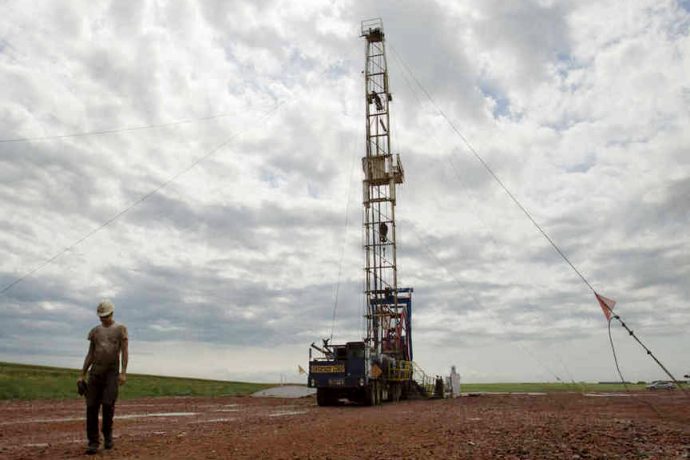When strangers find out that I’m from North Dakota, I get a few stock responses. People will ask me if I’m from Fargo (I’m not; I’m from an area called South Prairie, rural Minot) and then they might ask me if North Dakotans are as backwards as they seem. Or they’ll joke about my prairie home being a cold “flyover state” with nothing there, but “Mount Rushmore is there, isn’t it?” (It isn’t).
Ninety-five percent of these friendly folks have never visited the state and never will. I usually smile, say something about how I loved growing up there, how beautiful and spiritual the landscape is. And then I politely make my escape.
These kinds of responses are played off as joking or innocent but they’re ultimately incarnations of urban narcissism, a kind of malicious humor that posits rural and indigenous peoples as discardable, uneducated, and backwards. And they reflect an ignorance of the complex diversity—and sometimes surprising political and religious history—of the rural.
North Dakota’s political history is rife with early experiments in democratic socialism and cooperative ownership—what was called “prairie fire socialism”—and many of the cooperative services still live on today. The tragedies and spiritualities of indigenous peoples haunt the landscape. Syrian-Lebanese immigrants built the first mosque in North America near Ross, North Dakota in 1929 (and this welcome of immigrants, given recent events in Syria, is a history more urgent to our memories). And Teddy Roosevelt complicatedly rediscovered himself in the badlands, leaving a legacy of one of the most beautiful National Parks in the nation. The park bears his name.
![]() Enter to win a $50 Amazon gift card!
Enter to win a $50 Amazon gift card!
Click HERE to take our 2-minute reader survey.
Add in our literary history, with writers like Louise Erdrich (who lives in Minnesota but writes profoundly about North Dakota) and our epic poet Thomas McGrath, and the “flyover state” mantra becomes untenable. Don’t get me wrong: the state’s a complicated place, filled with unjust histories and memories alongside beautiful landscapes and stories. But forgetfulness and derision do harms to all kinds of histories and possibilities.
I thought about one of those histories and possibilities today. On October 11, 1973, then-Governor Art Link, a Democrat, gave one of the most important speeches in the state’s history. At the time, the state was undergoing a fossil fuel boom and inevitable energy development. Governor Link once stated that, “I have no intention of allowing North Dakota to become a sacrifice area in order to run television sets and air conditioners on the east and west coasts.” And he followed through on that commitment in his speech.
“When the Landscape is Quiet Again” became a call for cautious energy development and an “environmentally sound method of utilizing our precious coal and water resources.” In Link’s time, he envisioned a future, a quiet landscape where land is restored and reseeded for the benefits of future generations. It became a vision of the tenable ecological future.
If I’m being honest, I think about Governor Link’s words every day (I know I’m not the only one), but they come to mind today for a couple of reasons in particular. There’s a more important contemporary voice to listen to: one saying, “Mní wičhóni” or “Water is life” or “Defend the Sacred.” That voice recognizes the dangers of coal in ways that Governor Link could never have expected. The prayer camp led by Native Americans at Standing Rock in southwestern North Dakota formed an intersectional ecojustice-based resistance against the Dakota Access Pipeline that sacrifices human lives for the ongoing profitability of oil.
So when I travel internationally, and say I’m from North Dakota, I now hear: “Oh, that’s where Standing Rock is. It’s terrible what the energy corporations and the government are doing to people there.” (I’d urge you to read Marion Grau’s take, here in RD.) The systems, powers, and complicit personalities and politicians (including, now, North Dakota’s congressional delegation) supporting this pipeline are ever-changing, and even more threatening under the Trump Administration. But I think of this movement because it began as resistance to the idea that the people in place could be a “sacrifice zone” for the sake of the secure energy infrastructure in the United States.
The prairie has been groaning under the weight of exploitative and for-profit fossil fuel cultures for years now. The western part of North Dakota, the Bakken, is dotted with the parasitic metallic bodies of oil rigs, standing tall and burning excess fuel. Slurry from fracking is often disposed of in illegal and unethical ways without much repercussion. The money culture of fossil fuels disrupts everyday lives. The oil rigs stand, in my mind, as instruments facilitating a planetary death and a sixth mass extinction we won’t fathom for years.
I thought about Governor Link’s words, too, as part of my spiritual practice during Holy Week. As churches (my own Lutheran traditions included) tilt towards Good Friday and the execution of Jesus of Nazareth at the mechanisms of the Roman Empire, I’m compelled to ask where the sites of crucified people and places are today.
Jesus was crucified by the Romans for political sedition, for serving as a threat to the imperial occupiers of his day. His life calls us to point out sites of violence and crucifixion and resist them with all of the fury love can bring. I personally don’t believe the cross is a site of redemption (many Christians don’t), but I do believe it asks us to take the reality of suffering seriously. In the words of feminist theologian Mary Solberg, the theology of the cross might offer “compelling knowledge” that beckons people forward to see the suffering of others, recognize their complicity in systems that produce suffering and violence, dismantle those systems, and stand in solidarity against injustice. In this theological view, seeing the world through the cross asks us to redirect our attention to places of suffering and work for what is important in the world and life-giving.
In his vital book, The Cross and the Lynching Tree, theologian James Cone puts the realities of the lynching of black men and women and indigenous people in the United States (and that includes North Dakota and Minnesota) into dialogue with the symbol of the cross, the execution of Jesus. The images juxtapose trees of death. The lynching tree invoking horror in the daily life of black America under white supremacy; the cross evoking the violence of another time as well as a reminder that divine liberation and justice is not for the powerful but for crucified people.
Like Solberg, Cone reminds us that the cross, that Good Friday, can call out Christians to speak against their participation in systems of violence.
Solberg’s theology and Cone’s juxtaposition of the lynching tree and the cross compels me to ask if Christians might expand our symbols of crucifixion in an age of radical ecological injustice. We need new imaginations and stories to help us navigate this planet. These cruciform imaginations lead me back to the already-mentioned real metaphor for the devastation of human life in my home state—the oil rig and the oil pipeline.
The oil rig, now, stands as another tree of death in my mind, a manmade mechanism despoiling ecological life and contributing to the death-dealing systems of our culture and society. Burning metal trees flame warnings into the air like emergency flares. The oil rig becomes a symbol of the continued colonization of peoples of the prairie and a symbol of the continued reliance on an energy culture that wields death and devastating change for the planet. The oil rig is the symbol of the systemic poverty and death-dealing sacrifice zone Governor Link spoke about, but the rig might also symbolize the limitedness of his time. The suffering of the prairie is one of systemic violence in the history of the white-washed, Western destruction of Native lives.
Our pluralistic world invites multifaith and multispiritual perspectives. But, for me in this moment, in my own week of observations of Good Friday to Easter, I plan on resisting. I will not bear this cross of a carbon economy willingly. I will resist the crosses that ravage the beauty of the earth until my dying breath.
The essayist Paul Gruchow once observed that the prairie is one of the most potentially democratic of landscapes—its biodiversity of grasses, its symbiotic communities, its communal resilience in the midst of tough weather, its beauty, its deep roots. I hope that we might stand in that field, changed and challenged by the suffering we see, in solidarity with one another.
If progressive religious symbols of the cross can teach us anything, it is that systems of crucifixion are both evil and tempting. And we have to unmask these systems in the present, dismantling them with every carbon fibre of our being. We must unmask our own complicity and ask where we have contributed to the crucifixion of our neighbor and the planet. We need a reformation of our ecological imaginations.
Someday, in the future, I hope some will see miniature metal oil rigs in museums or hold them in memory, like a cross, to remind us that we no longer deal in those sacrifice zones or systems of death. We will not fly over them. And for a short while, one might hope, the landscapes of our spirits will be justly quiet again even as we struggle together for justice.





